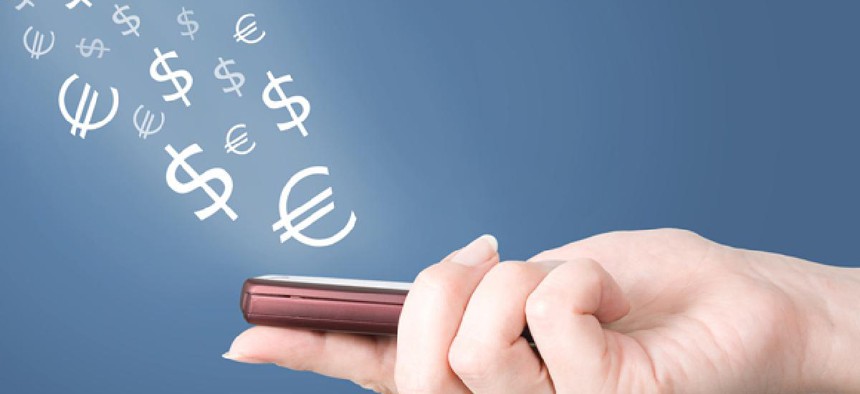USAID, Citi partner on mobile money

LessLemon/Shutterstock.com
Agency, bank seek to offer mobile financial services to “unbanked” mobile phone users.
A new partnership between the U.S. Agency for International Development and global banking giant Citi seeks to offer mobile financial services to “unbanked” mobile phone users – an estimated 2 billion people.
Speaking alongside USAID Director Dr. Rajiv Shah on Tuesday morning, Citi CEO Vikram Pandit set what he called the "modest" goal of eventually reaching half this population.
Citi, which operates in 160 countries, plans to use its scale and infrastructure to help move money between banks and a variety of payments systems that operate over mobile phone networks. USAID is providing $23 million as part of a plan launched in October to help train and support participating goverments, local service providers, and end users.
Is Citibank trolling the developing world for 2 billion new customers?
Not exactly, says Pandit. “What’s important to us is have these customers become part of the financial system,” he told National Journal.
The use of mobile phones as a way of making and receiving payments as an alternative to cash is catching fire in the developing world. These are typically quite a bit simpler than mobile banking apps for smartphones. They run on the simplest of phones, and allow users to move money by sending a text message.
The innovation has allowed users to make an end run around local financial-services providers, which typically charge a high markup for services like remittances and cash transfers. Shah said the elimination of these fees means a “huge amount of value and asset is created” that poor people can use on their own behalf. M-Pesa, a popular Kenyan service run by mobile carrier Safaricom, is frequently cited as a model.
The USAID-Citi partnership is being rolled out in nine countries, with an initial push in Colombia, Haiti, Indonesia, Kenya, and the Philippines. The goal, as Pandit puts it, is to connect the “last mile” of a financial transaction between a mobile carrier or bank and a customer. “Our goal at Citi is not to own the last mile, but to spur it on,” he said.
One way Citi plans to add scale to the effort is to encourage its own banking clients to make and accept payments using mobile money. For example, a distributor of consumer products could make and receive payments to merchants using the system, encouraging the merchant to adopt the system for use with customers. Governments can use the system to pay salaries and buy goods and services as well.
It’s trickier to use the system for direct person-to-person payments, Pandit says, because of regulatory differences between nations. Some permit carrier-based systems to conduct such transfers, while others require banks to act as intermediaries.
The effort could eventually lead to the extension of other financial services, such as credit, although Pandit cautions that while the technology is simple for making loans on mobile devices, it’s important to test the demand and viability of such services. “The worst thing you can do is provide credit to people when they may not have the need for it or the capability of dealing with it,” he said.
International aid and development is a hard sell in the current fiscal climate, and Shah hopes that ordinary Americans will see a link between the mission of USAID and their own economic well being.
“We’re not giving $23 million to Citibank,” he was quick to note. Increasingly, he said, “our economic future is tied to our connectivity to this next wave of emerging economies.”
(Image via LessLemon /Shutterstock.com)






